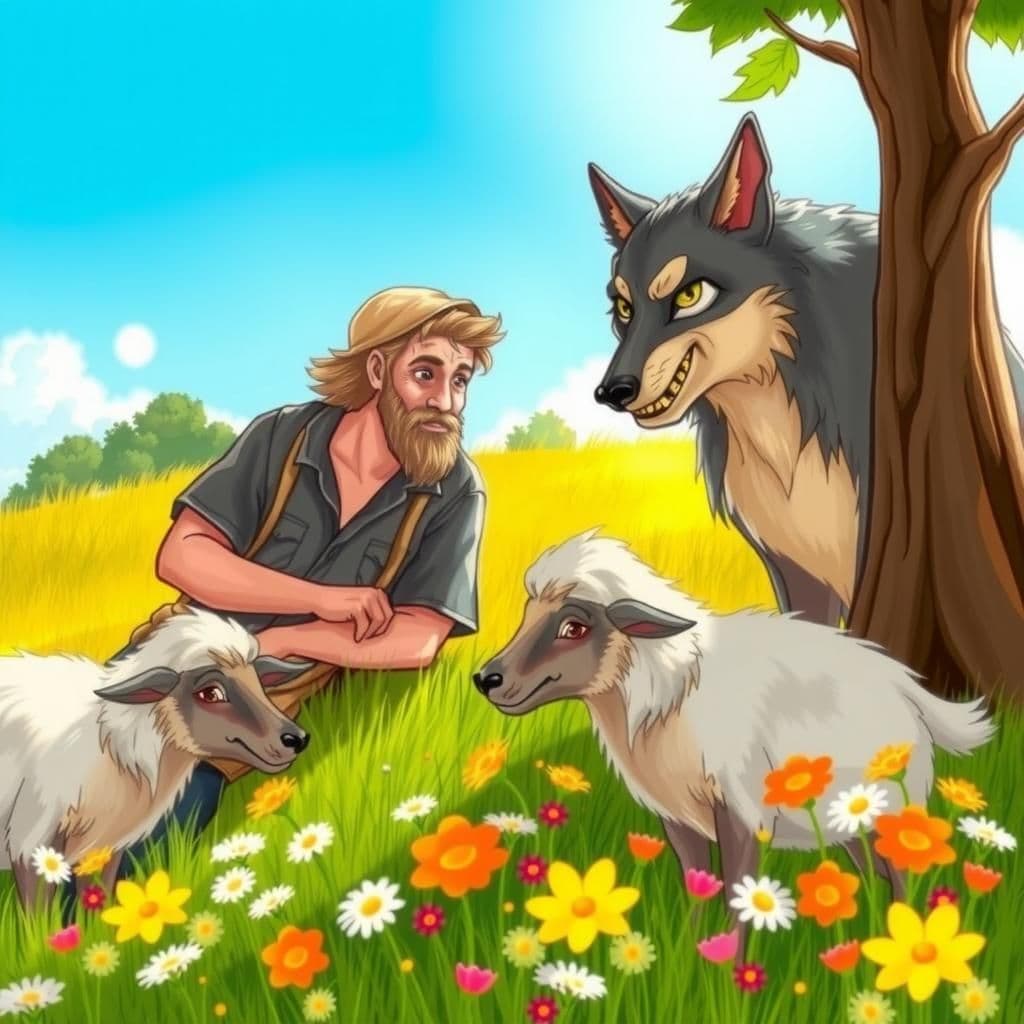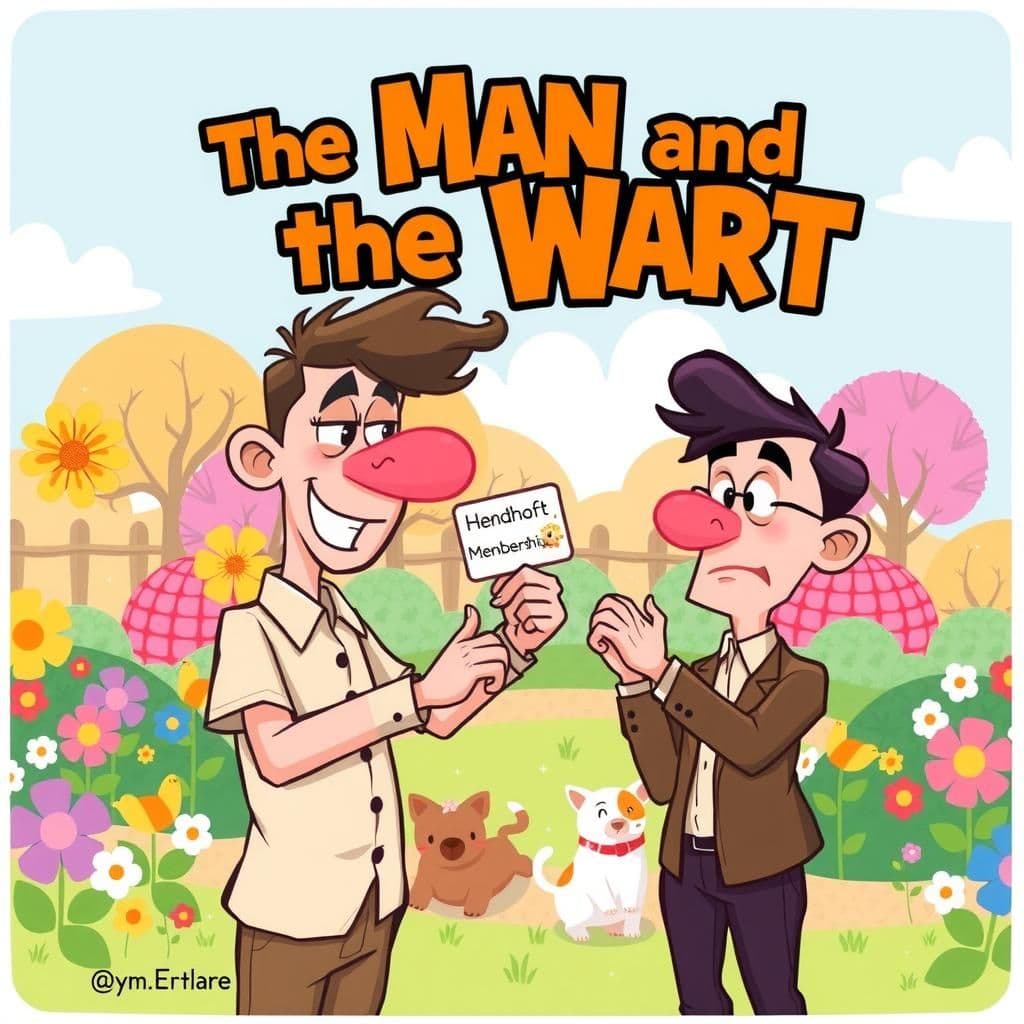The Wolf and the Shepherd

Story Summary
In "The Wolf and the Shepherd," a shepherd learns a valuable lesson about trust when he mistakenly leaves his flock in the care of a seemingly harmless wolf. Initially wary, the shepherd eventually grows complacent, leading to the wolf's betrayal and the devastation of his sheep. This concise moral story serves as a cautionary tale for young readers about the dangers of misplaced trust in those who may have ulterior motives.
Click to reveal the moral of the story
Beware of misplaced trust, as appearances can be deceiving and those who seem harmless may have hidden intentions.
Historical Context
This fable is attributed to Aesop, an ancient Greek storyteller, and has been retold in various cultures, often emphasizing themes of trust and deception. Originating in the context of moral storytelling in ancient Greece, it reflects societal concerns about naivety and the dangers of misplaced trust, resonating through generations as a cautionary tale. The narrative serves to illustrate the timeless lesson that appearances can be deceiving, and one should remain vigilant against potential threats, even when they seem harmless.
Our Editors Opinion
This fable highlights the danger of misplaced trust and the consequences of underestimating potential threats in modern life, particularly in contexts such as cybersecurity or personal relationships. For example, a business might hire a consultant who seems trustworthy and beneficial, only to later discover that they were secretly exploiting vulnerabilities for personal gain, mirroring the shepherd's folly in trusting the wolf.
You May Also Like

The Man and the Wart
In "The Man and the Wart," a humorous tale with an impactful moral, a man with a wart on his nose recruits others into a fictitious order, claiming its membership is rapidly expanding. When another afflicted person pays to avoid joining, the first man shamelessly returns to demand monthly dues, highlighting the folly of exploiting others' insecurities. This funny story serves as a culturally significant moral lesson about honesty and the consequences of greed.

The Thief and the Honest Man
In the wisdom-packed moral story "The Thief and the Honest Man," a thief sues his accomplices for his share of stolen goods from an Honest Man, who cleverly evades the trial by claiming he is merely an agent for other honest individuals. When served with a subpoena, the Honest Man amusingly distracts himself by pretending to pick his own pockets, illustrating the lessons learned from stories about accountability and cleverness in the face of adversity. This short story with a moral leaves readers pondering the complexities of honesty and complicity in wrongdoing.

The Quack Frog
In "The Quack Frog," a frog falsely claims to be a skilled physician, boasting of his medical expertise to all the animals. However, a skeptical fox highlights the frog's own ailments, teaching young readers a timeless moral about the folly of pretending to have qualifications one does not possess. This short moral tale serves as a valuable lesson learned from stories about the importance of honesty and self-awareness.
Other names for this story
The Shepherd's Folly, Trusting the Wolf, Deceived by Deception, The Guardian's Betrayal, When Trust Goes Wrong, The Wolf's True Nature, A Flock's Downfall, The Shepherd's Mistake
Did You Know?
This fable highlights the theme of misplaced trust, illustrating how appearances can be deceiving; the Shepherd's assumption that the Wolf was harmless led to the betrayal of his flock, a cautionary tale about vigilance and the dangers of ignoring one's instincts.
Subscribe to Daily Stories
Get a new moral story in your inbox every day.